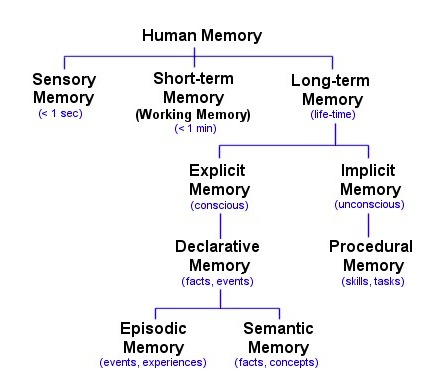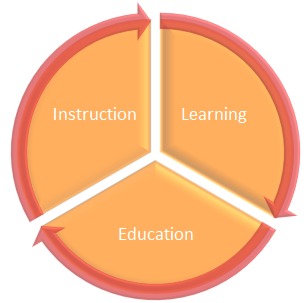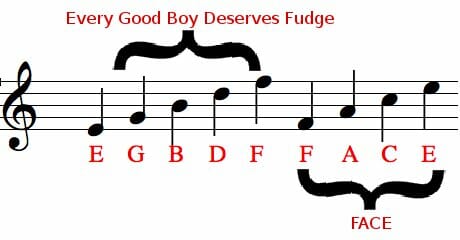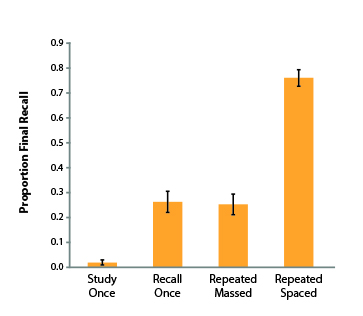Learning stuff online is the new standard for learning. It’s not just “how to tie a tie” how-to videos, it’s also learning hard skills. In fact, according to a recent report 59% of employed data scientists learned skills on their own or via a MOOC.
But how can we take better advantage of online learning? What’s the most efficient way to learn as much info as quickly as you can?
Memory and learning
First we need to understand how learning works.
People rely on memory and neural schemas to learn new skills. Any learning you do relies on your ability to recall your memories so that you can adjust them to new information.
Brain World Magazine explains:
“Our sensory system can hold numerous items simultaneously, but only momentarily. Learning is an active process that involves sensory input to the brain, which occurs automatically, and an ability to extract meaning from sensory input by paying attention to it long enough to reach working (short-term) memory, where consideration for transfer into permanent (long-term) memory takes place.”
What that means is that to have really learned something, it needs to be stored in your long-term memory.
Long-term memory and short-term memory
Short-term memory keeps fast, incomplete ideas or concepts that serve as pointers or links to other knowledge. The information is fleeting, lasting for less than a minute, and has been compared to “the brain’s Post-It note.”
When information passes through your short-term memory and needs to be dedicated to your long-term memory for future use, there are tricks you can use.
Mental repetition or rehearsal is a common strategy, or giving information meaning and associating it with the knowledge you already have. The higher the person’s interest level in the subject matter, the more likely they are to retain the information. (Both of these learning types rely on acoustics to encode information).
The information stored in your long-term memory doesn’t corrupt or get lost as easily, and has large storage capabilities, which is why you want to commit information there.

The cognitive psychology of how people learn
Every lesson you’ve learned is encoded as a memory. In order for people to retain information in their long-term memory, they need to create memories surrounding the thing you want them to remember.
In general, cognitive psychology acknowledges four main steps through which most people go about learning:
- Attention: the filter through which we experience the world
- Encoding: how we process what our attention admits into the mind
- Storage: what happens once information enters the brain
- Retrieval: the recall of that information or behavior
The question becomes how to optimize memory retrieval. What opportunities are you providing at each juncture for the material to be remembered correctly? In order for people to really learn something, they have to understand the concept, not just memorize it.
As the old Chinese proverb goes: “Tell me, and I’ll forget; show me, and I may remember; involve me, and I’ll understand.”

In general, people only retain about 8% of an instructor’s lesson after a week, especially if it’s overly complex or boring material, according to Dr. Art Graesser. They don’t understand the material, and therefore don’t remember it.
They cram rather than space out their knowledge, he says, giving up when frustrated, and relying on memorization, not retention. This has been shown to not work for long-term learning.

What works for long-term learning retention?
There are some ideas to keep in mind when choosing a course or teaching yourself. People learn best when the material is presented to them in a specific way. M. David Merrill’s 5 Principles of Instuction say that learning is promoted when
- learners are engaged in solving real-world problems.
- existing knowledge is activated as a foundation for new knowledge.
- new knowledge is demonstrated to the learner.
- new knowledge is applied by the learner.
- new knowledge is integrated into the learner’s world.
When you’re teaching yourself something new, make sure that you are engaged in reality-based problem solving, relying on information you already know to build off of, and required to demonstrate your new knowledge in real-world situations.
If the course you’re taking does all of these in its materials, you probably picked a winner. Note: This is a good place to start.
How to learn better online
Learning online is more convenient, but not necessarily easier. You’ll need to come prepared, just like with any other course.
You’ll only get as much out of it as you put in, so be prepared to participate, have allotted study hours (scheduled learning time on your calendar!), and complete tests and quizzes.
If you know what to expect and how people learn best, you’ll know what course structures to look for.
The course structures to look for
The Federal Institute of Education Sciences developed some evidence-based ways to identify more productive, long-term learning methods. Any course you sign up for should include several of these teaching methods to encourage your learning:
- Spacing your learning over time (sleeping helps encode memories, so at least one night’s space is ideal).
- Using worked solutions and problem-solving exercises.
- Combining graphics and verbal descriptions.
- Integrating abstract concepts and concrete examples.
- Tests and quizzes.
- Using case studies and stories (adding reality encourages positive learning transfer; use examples and non-examples).
- Helping people allocate their study time effectively.
- Asking people deep questions where they generate their own answers and reasoning.
- Providing immediate feedback.
Tricks you can use to learn information include using mnemonic devices to help you remember, as well as repeatedly testing yourself and blocking your time, which we’ll go into below. (Click for additional learning tips.)

Mnemonic devices and how they work
A mnemonic device is a learning trick designed to make information consolidation to long-term memory easier.
The Society for the Teaching of Psychology explains how they work:
“At a conceptual level, mnemonics bolster memory due to at least three factors.
First, they typically involve deliberate, or effortful, learning […] the focused attention the learner pays to the material while using and/or creating mnemonics supports encoding to long-term memory.
Second, they connect new knowledge with established schemas in long-term memory, a process also called elaboration, which enhances encoding and supports successful retrieval […]
Third, many mnemonic devices require the integration of two or more information codes (e.g., verbal, visual) which […] enhances memory by providing multiple routes to retrieval. […]
Shimamura […] created an acronym mnemonic to describe elements of mnemonic learning: “MOVA your memory,” with the letters referring to Meaningfulness (e.g., schema-building), Organization (e.g., chunking, use of hierarchies), Visualization (i.e., imagery), and Attention (i.e., effort).”

A knuckle mnemonic for the number of days in each month. Image source
There’s nine common mnemonic study tricks:
- Music mnemonics: Songs and jingles to help you recall. (memories are encoded acoustically; ex. the ABCs)
- Name mnemonics (acronyms and acrostics): Acronyms are sentences where every first letter of a word corresponds to a word or concept you need to know (ex. “ROY G BIV” for the colors of the rainbow).
- Expression or word mnemonics: The first letter of each word is combined to form a phrase or sentence.
- Model mnemonics: A model or diagram is used to help recall information.
- Ode/rhyme mnemonics: The information is placed into a poem (ex. “Remember, remember, the fifth of November” to recall Guy Fawkes Day).
- Note organization mnemonics: Organizing or color-coding notes. (This is pretty self- explanatory).
- Image mnemonics: The information is constructed into a picture. (Mental imagery may be particularly important.)
- Connection mnemonics: Connecting previous knowledge to new information.
- Spelling mnemonics: Tricks to remember spelling order (ex. “‘i’ before ‘e’ except after ‘c’ or when sounding like ‘a’ in neighbor and weigh.” Via Wikipedia

An acrostic mnemonic to encode the treble staff. Image source
Blocking study time
Dividing study material into smaller bits (less than 7 things at a time) or subjective categories allows your brain to encode information faster, and in the same way, separating study time into chunks can be helpful too.
Time-blocking strategies like incremental reading and the Pomodoro Technique are common for structuring study time. Even if you don’t use these techniques, brief study breaks vastly improve focus.
Chunking like this makes things quicker to retain, and digital formats are actually well-designed for learning styles, says Connie Malamed:

Connie Malamed, The E-Learning Coach
“Digital formats tend to parse information into reasonable chunks, making it easy to get involved, learn what is needed, exit when convenient and return later for another visit.
This type of accessibility is not only attuned to a busy lifestyle, it is attuned to how we learn. Learning in small bits makes it easier to absorb and retain information than marathon learning sessions. Thus, learning through digital media can help support learning agility.”
No matter how the content is delivered, though, Graesser says the key making sure that it embodies the “Goldilocks principle:” not too easy or too hard, but “just right.”
Why repeated testing?
In a learning retention study, participants were given a list of 40 Swahili words to learn. They were assigned to either be tested on the words or to simply study the words.
When the participants reconvened a week later, the group tested repeatedly on the words had a drastically higher retention rate (80%) than those who were not tested repeatedly (35%). Constantly test your knowledge if you want to recall the content.

Conclusion
Online learning is convenient, but the structure of the course and your own learning methods can make a big difference. The best ways to learn online are:
- Spacing your learning over time and repeatedly testing yourself. Allocate learning hours in your calendar.
- Using multiple types of learning strategies that suit your learning style (mnemonics, visual aids, repetition, sound, etc).
- Dividing your material and your time into manageable bits.
- Applying your new knowledge to real-life situations.




Thanks for this. What struck a cord with me was the 4 steps of learning according to cognitive psychology. It occurred to me that these 4 steps could be the basis of steps in a marketing funnel – ie a series of ads which a. attract the attention, b. encode the information in an easy-to-grasp message, c. package it in an approach that is similar to other such information for easy storage and d. allow the retrieval of the information at a later date (multiple choice questionnaire in an ad?). So it’s basically learning and education in a marketing funnel – all accompanied by the branding of the advertiser. Complex to structure and run but worth a try if anyone’s interested/has the capacity.
Hi Dimitris,
Thanks for the input. You’re right, this is definitely applicable to the marketing funnel. Understanding how customers intake information can only help marketing teams in formulating eye-catching products, etc. (Of course, knowledge like this has cross-channel applications, so social media campaigns should go without saying.)
Would love to hear if you end up doing that (or using this information in another way) yourself!
Awesome post. The article is useful for offline learning also as cognitive science is same. Working on given skills through practical application is better usually.
Thanks for the input, Megan!
I’ve been using online learning since 2014. But most of the time, I forgot the most of what I’ve learned in a few short months. So I decided to read more about how the brain works and put together a better plan.
Mostly, I learn while running or walking. My plan works like this – Listen an audio 2x per week, then put notes on a paper or Google doc (and reread them in a month) and then to explain what I’ve learned to someone close to me. Since that, I see that my learning is much more effective.
I love your ideas, especially the part about long-term learning retention.
Hi Jan, It’s awesome that you’ve found a way to learn that works for you. I know that I also learn while moving (I’m a kinesthetic learner)–writing things down commits them to my memory. Let us know if any of these other tips work for you.